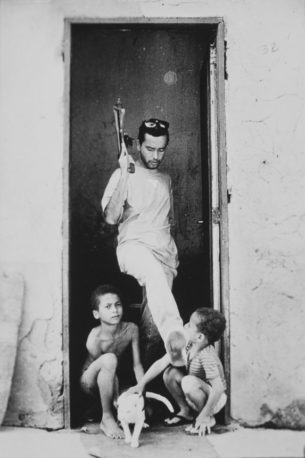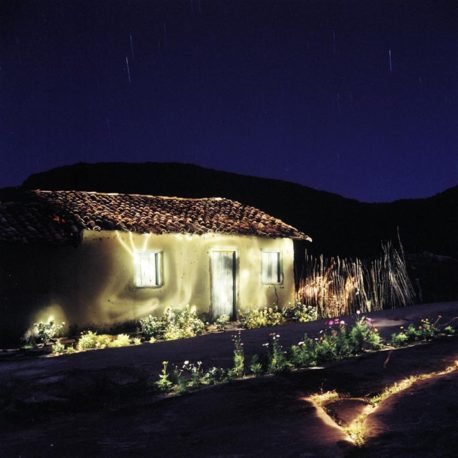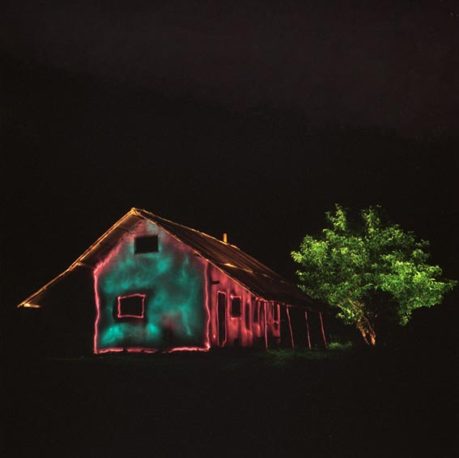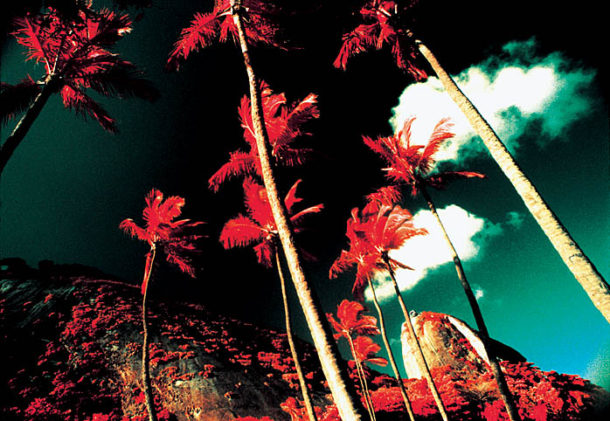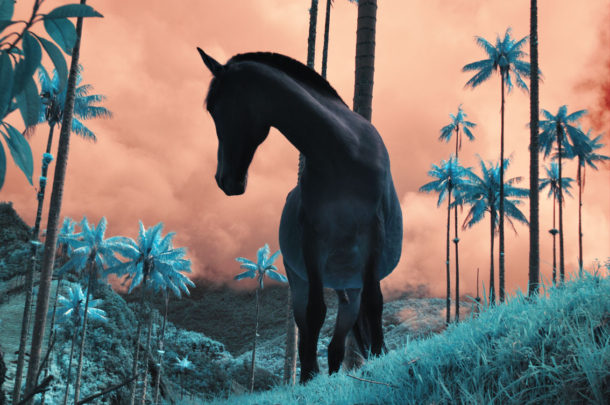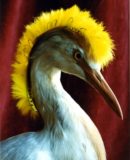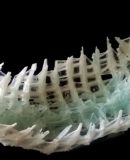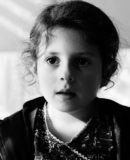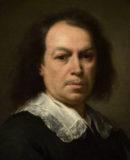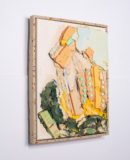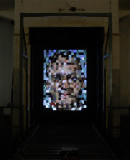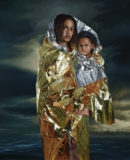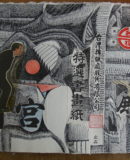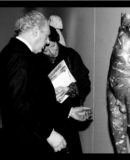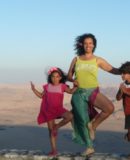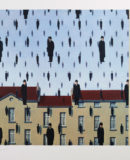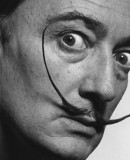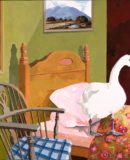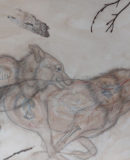World Fine Art Professionals and their Key-Pieces, 185 - Renan Cepeda
World Fine Art Professionals and their Key-Pieces, 185 – Renan Cepeda
Surreal, alien landscapes in unusual colors, with skies in a new kind of blue, gray trees in a red landscape and a royal blue horse between palm trees in a wavy landscape. This is what you could in Renan Cepada’s last show in Amsterdam’s WM Gallery.
BUCÓLICA , as it is called, is Cepeda’s latest infra-red series. It is like stepping in in a magical world, a contemporary Arcadia. Renan Cepeda, from Brazil, returned from his photography lessons in Portugal to tell a little bit more about his work and this show.
The bathroom
He likes to photograph what isn’t visible, he says. “I love to photograph what I don’t see. I construct a world and I invite the people to this world. I am like a reporter, working with my camera to discover the hidden reality. It appeals to the senses, there is a kind of sensitive radiation.”
His work shows a great mastery of technique and a substantive depth. How did he get up this path? An important thing proved to be that there was interest at home when he was growing up. “My father was an amateur photographer. He developed his photos himself in an improvised darkroom in the bathroom. He simply blocked the door of the bathroom and then we understood that his was busy with his photos.”
Jornal do Brasil
Renan also started taking pictures, and while he was still doing his studies, Industrial Mechanics, he coincidentally rolled into photojournalism. “The government of Rio de Janeiro was trying to tax parking in the street. There was a fight developing between the people and the traffic department, it mainly occurred in Copacabana.”
He went with his photo film to the journal, Jornal do Brasil, the most important journal of Brazil. “That day changed my life. At the Jornal, a central left newspaper, worked many great journalists and photographers like Carlos Hungria and Orlando Brito. They brought my pictures to the paper’s fotolab and then it went on to the editing room. ‘Your photo will go to the front page’.” He got an internship and after three months a contract. He could start at the Jornal. ‘Go to the streets!” In the meantime these photos were also to be seen at an expo ‘Happy in the city’.
Infra-red photography
For five years he worked for Jornal do Brasil. He gradually learned the tricks of the profession. Every day he shot lots of photos, sometimes 150 a day, many ‘banal’ photos. Late ’88 the Jornal underwent a major format change, there came a new lay-out made by a graphic artist. Many photographs appeared in the newspaper and even in La Nacion in Argentina, one of the other major newspapers of Latin America. Begin nineties he also began color photos. Renan worked not only for the Jornal, after ’93 he became a correspondent of the French agency SIPA-Presse in Rio. He also did offside jobs, like photographing artists, models, some PR work.
In the meantime he dreamt of making photos for National Geographic Magazine or working for Magnum Photo Agency. He wanted to make something unique and was looking for a suitable subject. That’s when infra-red photography got to his mind. No one in Brazil worked with it, although his father had experimented with it. “There were some books published in America. Internet came up – it was the early nineties – and on photo websites you could find information. In Brazil the ideas went in the direction of military applications.”
Unique landscapes
But Renans ideas went into a total different direction. “Photos in infra-red might make landscapes unique. It was a perfect technology to transform the ugly city into a beautiful place. Rio was quite a good place to examine it, lying between sea and mountains, and in the midst a National Park, Tijuca Forest, the world’s largest urban forest.
Infra-red was perfect to separate buildings from landscape. “The green of forests reflects much more light in infra-red. Green gets bright, water gets dark. This contrast makes it magic. It camouflages the city.” An so he started and made his first series in infra-red. Slowly he mastered the technique.
In 2001 Anita Schwartz, owner of the famous Anita Schwartz Gallery contacted him. “Was I interested in a show? Of course!” When asked for a key-work he mentions this period as a key-period. “The first time I felt myself an artist. The first time I stepped into the art market. Ten pictures of me were shown. It aroused a huge interest. The show encouraged many other photojournalists to present their work to the galleries. Only the real artists proved to come to the surface. The genre artphotograhy depends on artists, not photographers who happen to make an interesting photo. But as an artist, I first feel photographer.”
Rio’s ‘boom’
Rio de Janeiro became popular. Everyone wanted to be in Rio. “it started already in the late nineties. There arose a ‘Boom’. You had to have been in Rio, the artistic place where everything was possible. It was discovered also by the gay community. The American fashion photographer Terry Richardson came to Rio, he wanted to be part of this imaginative place.” Renan Cepeda however wasn’t a people photographer, he loved the landscape. “Photography for me is an escape from this place, however hip it is.”
Light painting
And so he went into the deep Brazil. He started ‘light painting’, also to be seen in the WM gallery. He discovered it himself in 2004. “Nocturnal photography. My two previous shows at WM Gallery were about that. I apply the technique of light painting on a certain subject.” You see farmhouses, churches, roads, by night with a mysterious brightly colored light. “It is typically Renan-style, saturated photography, figurative and no one ever made it. I wanted this. I like to add something new to the profession.”
Still he does also photojournalism and he teaches. All he does with the same 25 mm Nikon camera. “Crime, news items, football at night, art portraits, I did for instance Terry Richardson too.” But his main focus is on art. “People said: ‘you should not deliver too many photos, because you are an artist’. So my main work since 2002 is work for art festivals and art salons, I do projects and get fellowships and sponsorships. Since 2003 I live of the sale of my work.”
Life needs beauty
In his work Renan Cepeda wants to present an alternative for the futile. “Life is tedious. It need beauty. I need beauty. Many artists in one way or another involve the political aspect in their photos. In my opinion beauty transcends the political. Beauty is the nirvana of the people. It is the most important thing.”
Finally, does he have a philosophy? “To practise the profession of an artist is a way to be a philosopher. I have my four feet on the ground.”
Images: 1) Renan Cepeda at Maracanã 1988, 2) MorrodoTimbau, 3) Concurso de miss, 4) Árvore Rosa, 5) Casa Lavrinhas, 6) Centenária Azul 6×6, 7) Vando Verde Rosa, 8) Dois Irmãos Paineiras, 9) urca 3a, 10) Unicornio
Disclaimer: The views, opinions and positions expressed within this guest article are those of the author Walter van Teeffelen alone and do not represent those of the Marbella Marbella website. The accuracy, completeness and validity of any statements made within this article are not guaranteed. We accept no liability for any errors, omissions or representations. The copyright of this content belongs to Walter van Teeffelen and any liability with regards to infringement of intellectual property rights remains with the author.


